My tower neighbourhood was built with modernist ideals of green space, low density and novelty. In the ‘50s, Toronto planners and architects stretched their limits to see what urban forms their minds could conjure. They broke with tradition, creating spaces no one had ever seen before.
By the time I was born in the ‘80s, the novelty had worn off. The original ideals had aged through the first generation of tenants, those who had been tasked with interpreting the space from the start. This was especially true of travel routes, where many tenants quickly realized that sidewalks did not always lead you to where you wanted to go. With these neighbourhoods being so unique and new, residents were given the chance (forced?) to discover the hidden paths that led to gathering points and places of commerce. These have continued to evolve.
These alternative paths became regular migration routes for the children in summer, leading us through the wild, dark sides of our modern neighbourhood. One of the most popular paths was the Shortcut to Eatonville Library.
The Shortcut took us beyond The Parking Lot and into The Field behind the Park. We passed the House of Trees and The Evergreens, maybe grabbing some pinecones and wildflowers along the way. All the while, the sound of Highway 427 filled the space with its deep rushing noise. Crunching through the Fields of Thistles we reached The Far Fence.
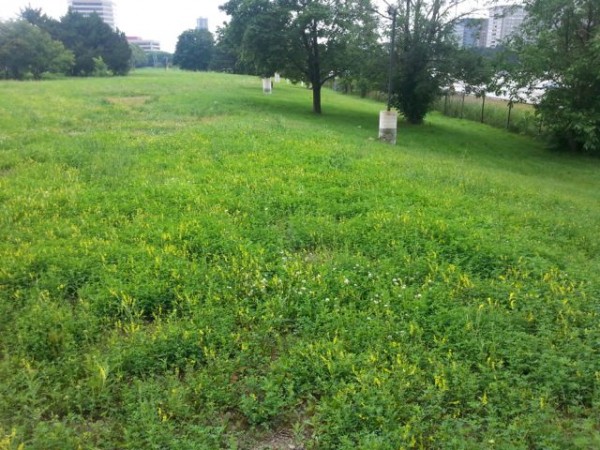
You had to know where to look in order to pass through the fence easily. The secret was at the point where two fences connected. There was a small crack at a junction of fences, where property lines intersected. Through here, we made it to the other side.
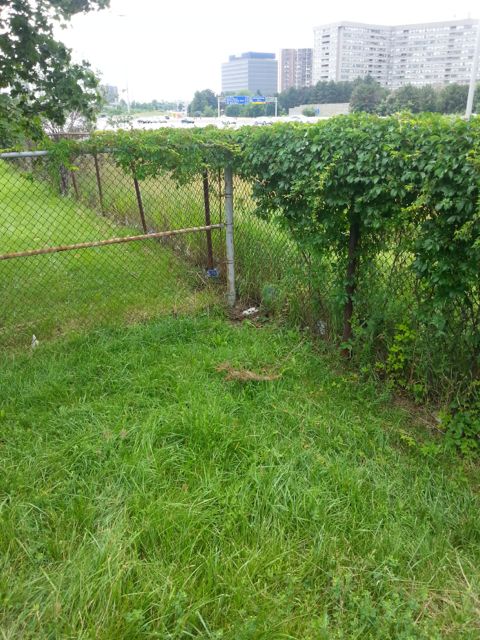
We emerged at the far corner of The Track. This was always a striking sight. After having wandered through the brambles, we were left here in a vast, grassy expanse. The highway boomed at our side while our towers watched from above. In the summer, The Track hosted a regular conference of lounging animals; there were seagulls, geese, dragonflies, grasshoppers and sometimes a few squirrels. We would tread lightly, not in fear, but in respect. It always seemed like the animals were taking a load off, and we did our best not to bother.

At the far end of The Track, we navigated through the maze of cars and concrete in The Adult School’s Parking Lot. After meandering through the valleys between these crags of concrete and metal, we stepped back on to the sidewalk, and made our way to Eatonville.
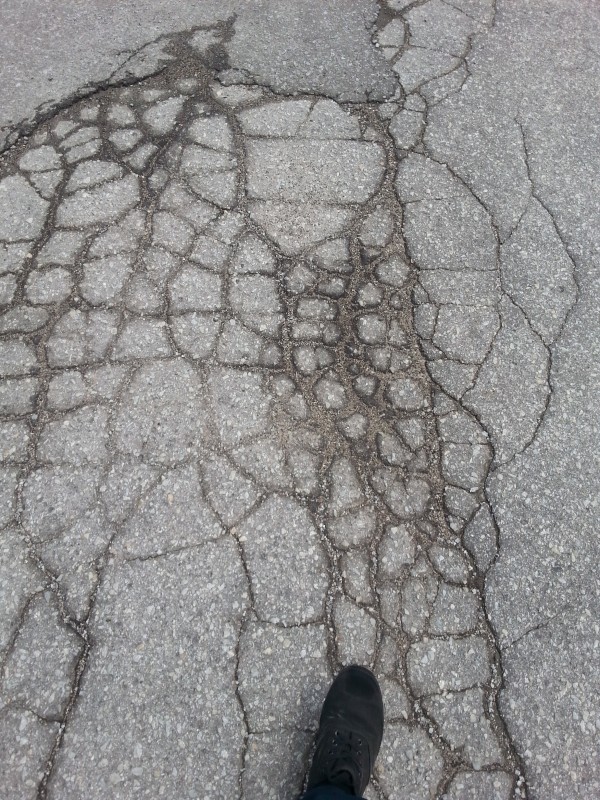
Modernist planning tried experimenting with ideas that had never been envisioned or tested before. Towers in the park were built on an idea, but their evolution was dependant on the tenants. In reality, the people that envisioned these spaces would never be the ones to write their stories. They would have never thought of children revising the plans with their movements, cutting through the logic of the car, erasing borders and barriers, and quietly reforming the landscape to suit their needs.
I later realized that the tradition of this shortcut was our own conversation with the land and its structures. The land told us, “Be modern!”, and we quietly replied, “Up yours.” We rejected modernism before we even knew what it was.
Yet, if modernist planning (perhaps accidentally) gave us the power to write our own story, to carve out our own pathways, and understand the landscape in such a meaningful way, how could we reject it completely? Analogous urban forms have existed for less than 100 years, unlike the ancient streets of the old world. We, the tenants, and especially the children, were writing the history of these spaces, and passing them down generation after generation. Our modern homes, broken from tradition, new and untested, were an enormous blank canvas for us to accept, reject, write, revise, draw and traverse based on our own rules.

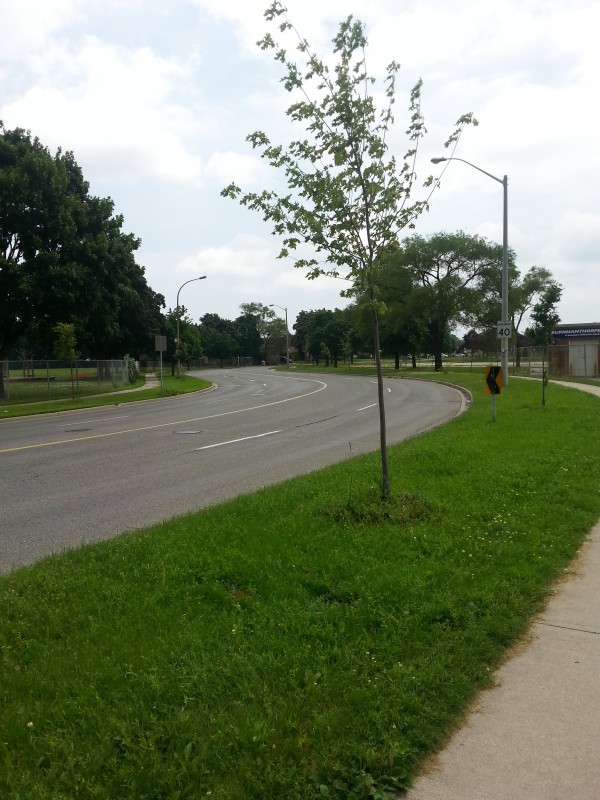
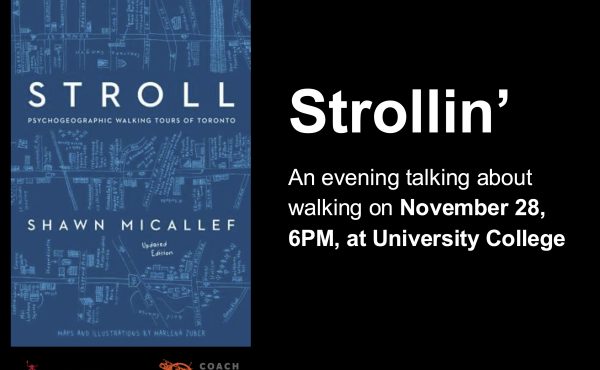


6 comments
I have taken this very short cut so many times in my life. Great article Sheraz!
very nice photo thanks
Nice piece. I’m reminded of the story of the university dean who when asked by landscapers where he wanted to put in footpaths between buildings, told the planners to leave it all as grass for one season and that the students own routes would determine where the paths should go.
I grew up in similar-ish environments in Kitchener, in neighbourhoods where you get postwar suburban homes combined with mod tower-in-park deals, and I want to say this post puts that space in a new and exciting light. Despite that…even this post can’t erase how shitty it is to traverse that space. Kitchener-Waterloo is remarkable for another thing: its non-grid street pattern. Its contemporary streets follow the paths and roads made by early settlers to get from one important site to another as quickly as possible. Modernist planning (with plenty of historical precedents) forgets this kind of practical city-building, and it takes kids (marginalized in otherwise non-marginalized neighbourhoods) to disregard the plan and make sense out of a space designed by abstracted ideologues. As per the above comment, the footpath is a great indicator of where institutional paths should go. I do like Modern spaces like the ones described — for their peculiar idiosyncracies and crappiness. It would be nice if we could make them more exciting, safer, and, this is especially important, totally legal to traverse, which is not always the case, following the examples we have.
They footpath idea is the same logic they should apply when plowing walkways through Dundas Square. After a snowfall, they’ll clear a few routes across the Square, but inevitably you’ll see some well-worn routes in the snow that weren’t considered. Sometimes the paths cleared don’t make fastest crossing, especially if you’re going from the Dundas and Victoria corner to the Hard Rock Café.
The new Canada Square on the Harbourfront is another example. There’s only one designated crossing into the Square from the neighbouring Queens Quay Terminal. The Square itself uses artificial grass everywhere except at the periphery. In preparation for the opening they had fenced off the fresh grass to allow the sod time to take root. After the Square opened, people following the existing walkway on the north side of the Terminal were forced to go out of their way to use the designated walkways. Many just chose to continue on through. Two weeks later the grass is starting to show some wear.
Why don’t they clear all of Dundas Square of snow in the winter? It should be open to be used all year round for rallies and events. We’re people–we don’t hibernate in the winter. A mass of people in jackets on a sunny winter day won’t be cold even in Toronto.